Climate work in action
Alex Smith, former Climate officer at MGS, wrote about his trip to see some of the work museums in Scotland are undertaking in order to increase their sustainability and tackle the climate crises.
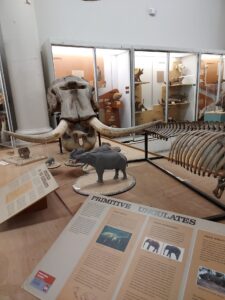
Introduction
As part of my role as Climate Officer for Museums Galleries Scotland, I’m in a great position to hear about some of the proactive and creative actions museums are taking to tackle climate change. Including taking steps to reduce their carbon footprint and engagement work with visitors and communities. When the opportunity arises to visit these museums in person it’s always welcome. Reading about solutions isn’t quite as exciting as seeing a biodiversity garden in full colour or solar panels in bright sunshine, all of which I was fortunate enough to see on my latest trip to museums in Crawfordjohn, Glasgow, and Edinburgh.
Crawfordjohn
First up was Crawfordjohn Heritage Centre which is a small, rural museum in South Lanarkshire. I’d previously been in contact with the museum when they received MGS funding towards the installation of solar panels and humidistats to control the temperature in the museum. This funding also went towards restoration work for one of their external walls. This work, along with moving objects to a smaller archive room, saw their electricity bill for 2022 fall by a remarkable 75%.
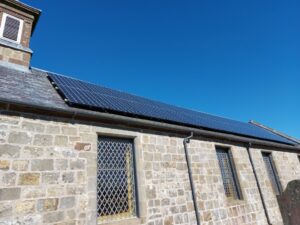
After a phone call with the museum earlier in the year to discuss this project and their future plans to install more solar panels on their remaining roof space, they were very kind in inviting myself and Rachael Rowley (Head of Resources at MGS) out for a visit.
We were fortunate to visit on a beautiful, cloudless day which made the countryside settings even more enjoyable. We were pleased to spot plenty birds of prey!
It was obvious that the key to the success of the museum was the staff and volunteers. The great work they were doing with funders and local experts was an inspiring example of what a smaller museum with a strong community can do.
Hunterian Zoology Museum
Next up was a trip to Glasgow to visit the Hunterian Zoology Museum and The Burrell Collection! The Hunterian Zoology Museum highlighted the ongoing biodiversity crisis in their exhibits by including labels that show the conversation status of certain species, extinction drivers (including climate change), and a much needed focus on insect levels.
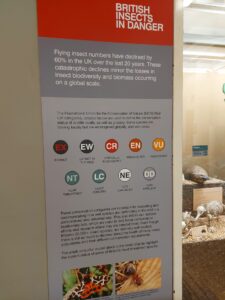
The Burrell Collection
The next day was spent with wonderful staff from Glasgow Life who walked me through their ambitious plans and showed me the changes in practice at the Burrell Collection since its refurbishment. These changes included a top to bottom sustainability approach for the building, including repairs to their roof, installation of modern glazing, and sealing floors and skirting boards – making the building more air tight and reducing its overall energy consumption.
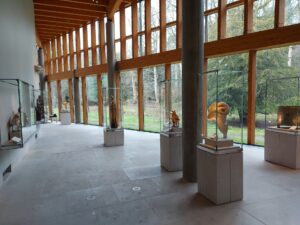
Museum of Edinburgh
With a final stop in Edinburgh, I visited the Museum of Edinburgh to see their biodiversity courtyard. This was an exciting example of what can be done with a relatively small space in the heart of a city.
The courtyard has been repurposed to act as both a carbon sink with more flowers and flora to take in carbon dioxide but also with added biochar into the soil to increase the amount of carbon the soil itself absorbs. The flowers and plants that are grown there include those which provide support and food for insects and pollinators – these can be hard for animals to find in urban settings.
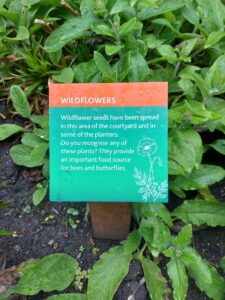
Similarly, new benches were installed which were upcycled from old wood and included bug hotels or bird friendly features. All throughout this space were signs explaining to visitors what the museum was doing and why it was important.
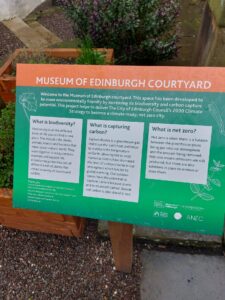
All four of these visits highlighted to me the diversity of museums in Scotland and the range of actions they can take to tackle the climate and biodiversity crises we face. All museums can and should take action to be part of the solution and based on these visits, it seems the most impactful action can be accomplished by using what you already have. Identifying what makes your museum unique and utilising it to become more sustainable and engage with your visitors and community.